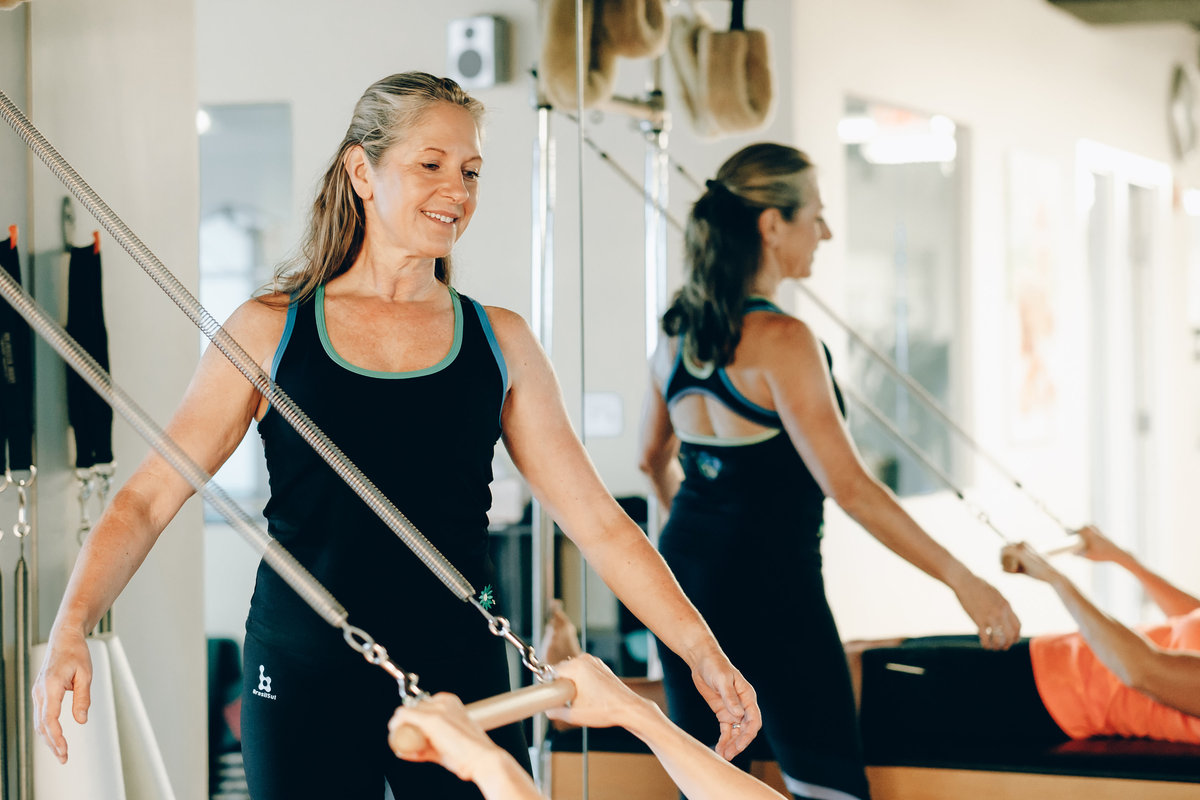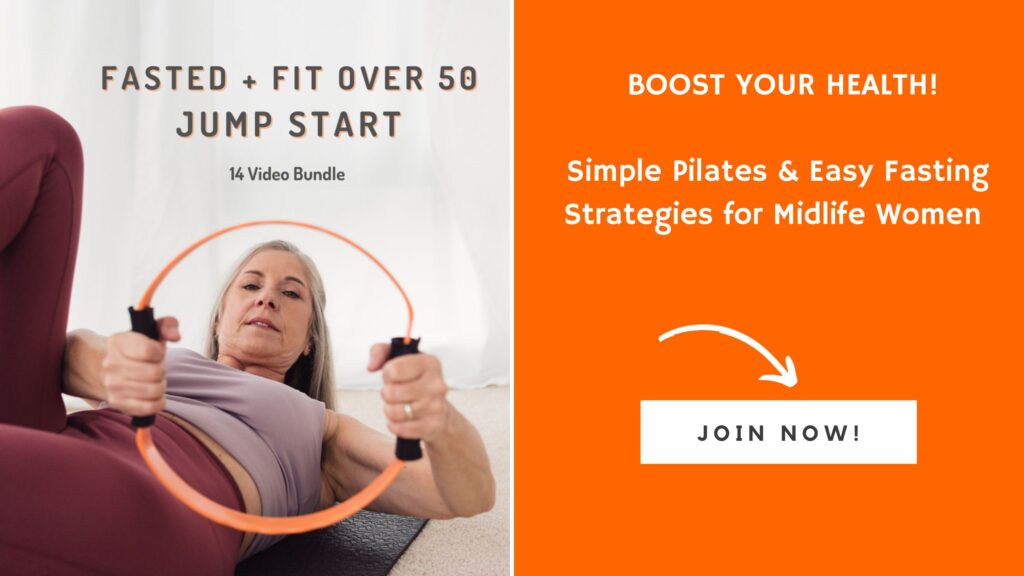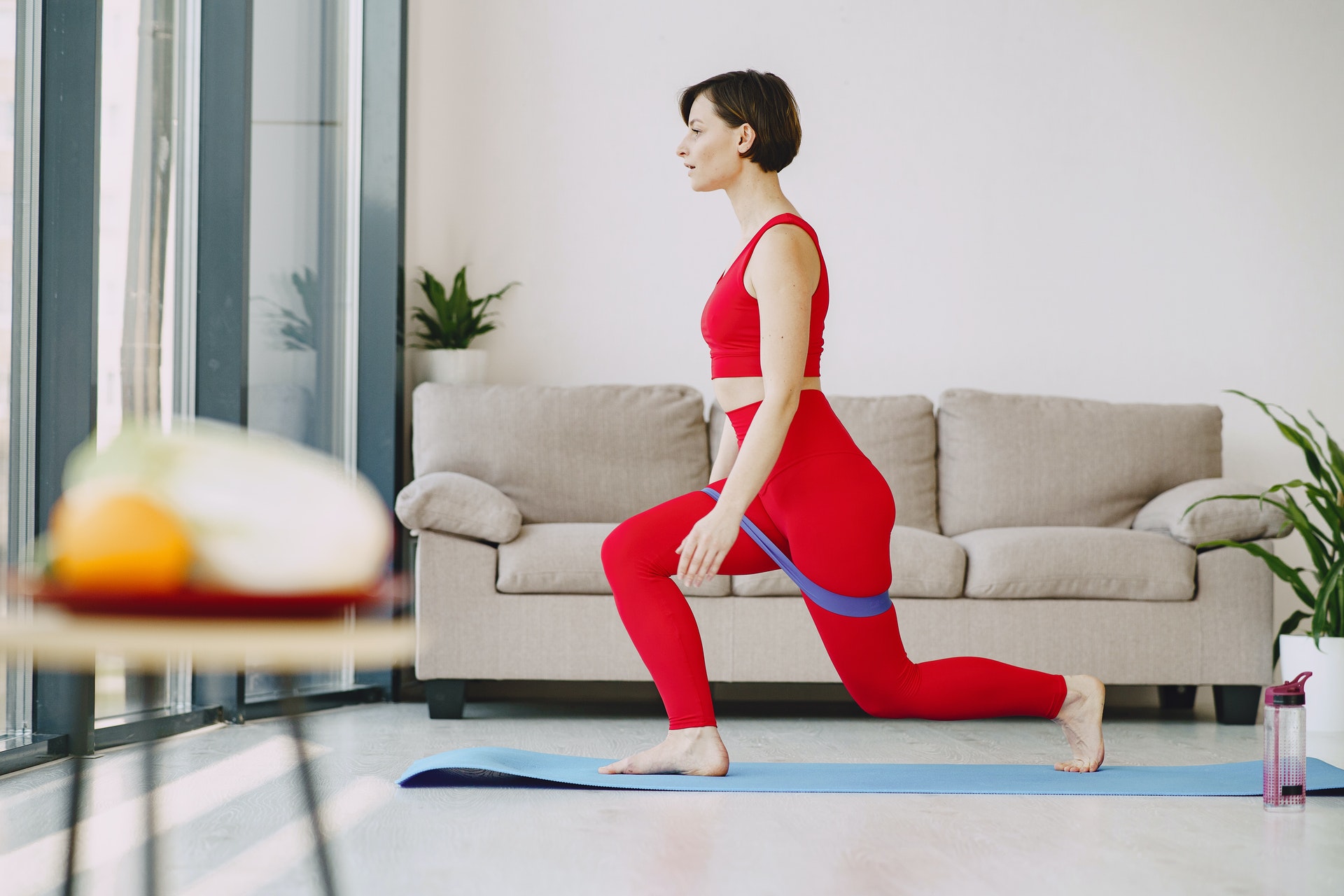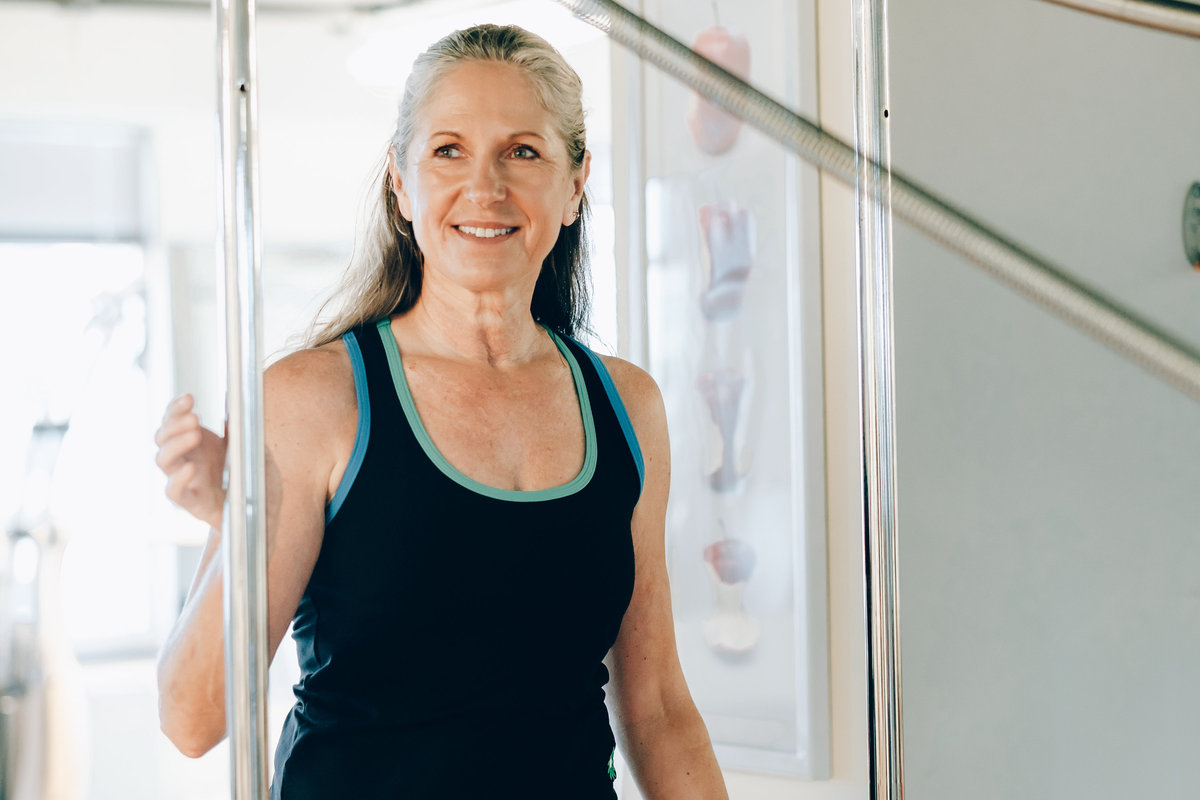Your health and fitness journey is a life-long commitment. Now that you are in midlife, you must adjust your fitness strategies to suit your aging body. Sorry, but it’s true! With so many new exercise regimes, deciding which is right for you can be difficult. If you’ve been wondering whether it’s too late to start Pilates, read on to hear my personal and professional opinion on this up-and-coming fitness system! If you’re over 50, stop wondering if Pilates is right for you.
Let me say one important thing before we go further on what exactly Pilates is or why you should or shouldn’t try it out. It’s this: IT IS NEVER TOO LATE.
No matter what age you are or the fitness level you’re at, it is never too late to start getting fit and healthy. You can constantly adapt the routines to suit your current capability, and you are never too old to try new things or feel great in your skin.
So, now that we’re on the same page, you’ll be glad to know that Pilates is a fantastic fitness program for any age and ability. Here’s the lowdown.
Pilates Over 50 – Is It Too Late To Start Now?

What exactly is Pilates?
Pilates is a system of exercises designed to improve physical strength, flexibility and posture, breathing, and overall well-being. You can practice Pilates with specialized equipment or in a simpler form without the equipment and just on simple floor mats (we call this Mat Pilates). Either option has impressive benefits, particularly for women over 50. Over 500 exercises in the Pilates equipment repertoire and 34 mat exercises exist. As you can see, it’s an in-depth workout for your whole body.
I began Pilates about 20 years ago, and I’ve never looked back. There came a point in my fitness coaching journey when I had to decide whether to teach Yoga or Pilates, and I’m so glad that I decided to go with Pilates. My experience with this routine has brought me and my clients many benefits as a middle-aged woman. Read on to find out what they are.
Benefits of Pilates for Women Over 50 And Why It’s Not Too Late To Start Now
- Improves posture and confidence
Every exercise in Pilates Matwork emphasizes good posture, encourages standing tall, balance throughout the whole body, and ease of movement. As you stretch your body, you lengthen your spine, naturally forcing you to straighten up your posture. I like to think of this posture as if you’re wearing your crown. Your shoulders roll down and back, your jaw rises, and you look and feel so regal! This postural alignment encourages a much better range of movement and allows us to see where unhealthy movement patterns have taken root. Do you lean into one hip? Does one arm swing more than the other? Things like these create an imbalance in the body, and Pilates does a stellar job of correcting that
- Leaner Muscles
Pilates focuses on lengthening and expanding the muscles, making them longer and leaner. Movements are done with precision and focus and often include isometric contractions – tightening the muscles without moving them. Ultimately, this builds strength without adding bulk
- Builds Core Strength
Since Pilates is a weight-bearing exercise, it increases power throughout the entire body and the spine. Every exercise in the repertoire targets the core. Additionally, holding your torso in place while moving your limbs in different directions develops greater flexibility and balance alongside that core strength.
- Reduces Back Pain
Pilates often addresses back pain as it corrects postural and muscular imbalances. Your spine deteriorates with age and is a significant reason for your back pain. Pilates reduces and prevents back pain by strengthening your core from deep inside rather than from the outside inwards (like Plank positions do).
- Low Impact
I know my knees don’t take the same amount of impact that they used to. Luckily, Pilates is low-impact in nature. It’s a flowing routine with no jarring movements. This makes it an ideal choice for participants of any age. I still practice it 2-3 times a week!
- Breathing
Breathwork has received much recognition lately for its role in stress reduction and overall health. Like Yoga, Pilates focuses on breathing as part of the movement sequence so that you inhale and exhale at times that support your body movements. It becomes a very fluid-moving meditation and is used for stress reduction. In addition, mindful breathing techniques during stretching and lengthening movements enable our chest to open fully and our lungs to breathe as they are supposed to.
- Mindfulness
Pilates connects your body and mind through its focused and precise movements. This, combined with breathing and slow controlled movements, energizes the body. Unlike other exercises, the repetitions are minimal, focusing on technique. This makes it a less intense choice, which for those over 50 is often a welcome change. The slower pace is calming, helps to reduce stress, and creates an almost meditative aspect if you ask me.
- Builds stronger bones (risk of osteoporosis)
One in every two women over 50 in the USA will suffer Osteoporosis-related hip, spine, or wrist fractures in their lives. Wow, that is a lot of fractures that stronger, better bones could avoid! Research has shown increases in bone density by practicing Pilates. This is an essential practice for women who are in or approaching menopause. In case you didn’t know, women lose bone density during menopause, so building up your bone bank account with healthy lifestyle choices like Pilates as early as possible is vital. You can hear more about that in this earlier episode.
What else is there to say?
In case you haven’t spotted it, I’m a big fan of Pilates for women over 50. It brings to the table many extra considerations we need to account for in our fitness journey and healthy lifestyle strategies. It can be easily implemented in short periods, and it delivers results. Some of the most frequently asked questions are listed below to ensure that there is no doubt whether you can start and master Pilates over 50.
Some frequently asked questions about Pilates.
- How long does it take to get in shape? If you’ve listened to my podcast or read my blogs before, you probably know the answer to this….It depends! There is no one size fits all, and how long it takes will depend on where you are in your fitness journey right now and how often you commit to the routine. Don’t worry about how long it takes. Just make sure that you commit regularly and that you are enjoying it!
- Can Pilates tighten your skin? Is it good for sagging skin?
Unfortunately, this is a hard no. However, Pilates does develop leaner muscles underneath that skin, which you will be able to see and feel. What’s going on under your skin is way more important, so you should feel great about that! - How often should you do Pilates?
My standard recommendation for strength training is to alternate it with cardio. So, every other day is enough, and make sure to mix up what you do so that you don’t get bored and start to slack on your goals.
- Does Pilates help with losing belly fat?
Pilates is not a weight loss program, but it can become aerobic, depending on your fitness level. Some of my clients found they lost weight because they started paying more attention to their bodies and, hence, their diet. You will begin to lose inches as your body tones up, but Pilates can’t claim all the glory for that! - Is Pilates for everybody? Pilates may not be a choice for everyone, but it is most definitely an option for everyone. Whether you feel it fits in with your health goals and lifestyle choices and is a method you will enjoy is up to you. You may like to listen to this interview with Jillian Hessel, a 2nd generation Pilates teacher who worked directly under the founder of Pilates (Joseph Pilates). Jillian discusses how Pilates can work for any age and fitness level. I highly recommend listening if you’re still on the fence.

How to get started with Pilates Right Now
It’s never too late to start Pilates. If you’re interested in taking it up and improving your health and fitness, then the first thing to do is decide which style suits you best: equipment or mats. Maybe you want to go all out for the full repertoire, or perhaps you’d instead dip your toe into the equipment-free sessions first. There is no right or wrong answer.
Once you’ve decided, you can head over to my YouTube Channel to find an array of Pilates videos you can follow. Most last between 3 and 9 minutes, so don’t worry about keeping up or being new to it.



Great overview of Pilates. I have done a lot of mat Pilates and always felt it was great for strength and stretch.
Thank you, Phyllis. As you know I love Pilates and glad you had such a fantastic experience with it.
This is a great explanation of Pilates!
I have yet to get back to my gym and pilates classes.
Rosemary
Thank you, Rosemary. I am lucky that I have everything I need in my private Pilates studio and don’t have to go anywhere. Maybe you want to try out some of my Pilates workouts on YouTube. https://www.youtube.com/channel/UCQIeOesGLGAOD5RhI2KYjcA
Pingback: 3 Compelling Reasons To Start Pilates Over 50 And Make It A Habit
Pingback: #173 - 3 Easy Ways How You Can Make Pilates Over 50 A Habit
Comments are closed.